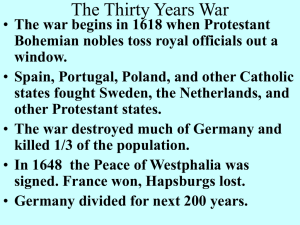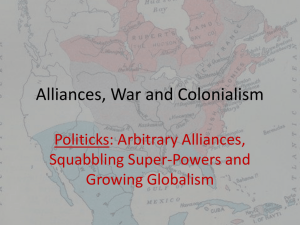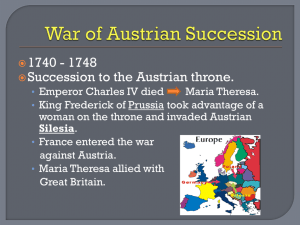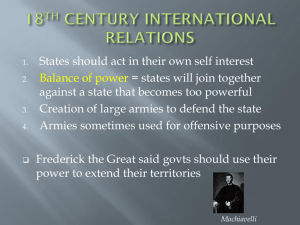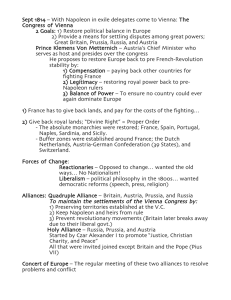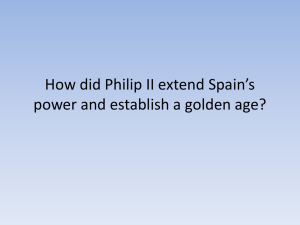Russia & Europe/Two world wars
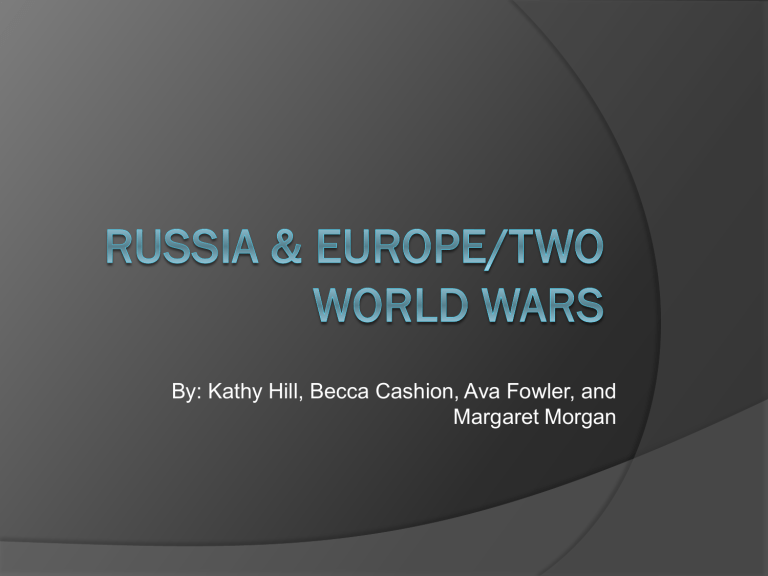
By: Kathy Hill, Becca Cashion, Ava Fowler, and
Margaret Morgan
Irvin the Terrible’s Death political instability.
30 year period of
-Fighting for control of state
1613 instability restored with 1 st
Michael
Romanov tsar,
End of century Peter I the Great transformed Russia into major
European power
-Only 10 years old when he became Tsar
-Fascinated with technology o Even visited Dutch Republic to study manufactures and different companies. Listened to lectures on anatomy. Most importantly visited shipyards to learn shipbuilding, which he enjoyed.
Applied what he had learned to the rest of his life.
-Fashion: Forbade men to grow beards in
Moscow, his court was ordered to dress in western clothes
-Loved alcohol, coarse language, and practical jokes
http://www.youtube.com/watch?v=yyLJ2ai
KUOw
1700, 2 decade struggle w/ Sweden for control of Baltic Sea.
Why? To link eastern and western Europe.
Peter saw that it was essential to have control in order to maintain major power.
Russia won! This was a turning point in their history.
City built by Peter
Thought to be reason for success in securing the Baltic Port.
Became new capital of Russia
Forced skilled craftsmen to settle there with their families.
Continued fighting w/ Sweden
-Peter introduced up-to-date western drill and weapons
-Built a Baltic Navy from scratch
TAXED EVERYTHING from “beehives to beards to baths”
He did this in order to gain more $ for the military
1709- Peter destroyed the Swedish army at this battle of Poltava
-9,000 Swedes died, 16,000 surrendered
Swedes never recovered from this war.
At the end of the Great Northern War
Peter was proclaimed the emperor of
Russia.
Peter continued to restructure Russian society
3 tiered hierarchy:
State Services
•Had to work up from the bottom of their service branch up to the top on the basis of personal merit.
This idea of “personal” merit was invented by
Peter, called the Table of
Ranks , and was even tested by himself when he rose through the ranks of the army and the navy.
Landlords
•Peter demanded they serve for a life in military or civilian administration
Serfs
(1/2 of Russian population, millions of them)
•Under control of landlords
•Worked without pay
•NO FREEDOM (resembled African slaves)
Most radical reform when Peter tried of abolish this order of bishops in the
Eastern Orthodox Church
Never openly attacked Orthodoxy, but he was a Lutheran that was influenced by his beliefs
Replaced it with the Holy Synod, which was a council of clergy that supported
Lutheran teachings by reducing the church to a simple department of state.
1725-1762: Russia was allied with Austria against France, the Poles, the Swedes, and the Turks.
This encouraged Peter’s Policy of bringing
Russia directly into the European system of international politics and diplomacy
1762landlord class was cut out of Peter’s compulsory state service obligation. As a result the landlords served voluntarily since service brought prestige,influence, and wealth
1762-Peter III became emperor
Violent, crude, and dimwitted
Feared Russians and loved Germans
Lutheran and ordered all icons to be removed from Russian Churches while demanding
Orthodox clergy to dress like Lutheran pastors
Married to Sophie who plotted with courtiers to depose Peter in a palace coup d'état 6 months after Peter’s accession.
Soon murdered (by his wife) and the conspirators deemed Sophie as his successor.
Sophie ruled Russia for the next 34 years as
Catherine II the Great
1762-1796
One of Russia’s most powerful rulers
Continued Peter III’s polices by
capturing all ecclesiastical lands (which continued to reduce the church’s independence from the state)
Exempting the landlord class from compulsory state service
Gave large amounts of land and peasants to her “favorites”
This increased the # of serfs
Expanded Russian territories of the north shore of the Black
Sea, the Crimean peninsula, the northern Caucasus, and established the modern western boundaries of Russia
By the end of her reign, only 50% people in the Russian territories were Russian. Rest were different ethnic and religious communities
Cultural diversity in the empire
1740-1748
Frederick II of Prussia vs. Maria Theresa of Austria
Rulers of Bavaria and Saxony challenged Maria Theresa’s right to rule (said there were more legitimate heirs to
Charles VI)
○
○
Frederick II wanted Silesia (wealthy territory in Austria)
○ Took advantage of Maria Theresa’s weakness because of the struggle over succession
Claimed Silesia belonged to Prussia and seized it
Britain and France joined in
Britain
France
Vs
.
Austria
Prussia
War ended in 1748= Prussia victorious kept Silesia
o o o
1756-1763
•
•
War broke out again between Austria and Prussia over
Silesia
In the meantime…
France and Britain at war in North America
Continued fighting in Europe and India over colonies
Shift in alliances
Britain France vs.
Prussia Austria o Diplomatic revolution= this shift in alliances between
European states
Effects on Society:
Frederick II of Prussia victorious kept Silesia
○
○
Prussia now allied with Germany
Strain on Prussia’s finances and military (saved by Germany)
Austria suffered a major loss after the Seven Years’ War
○
○
○
○
Shock of losing Silesia made Maria Theresa focus on building the state
Before the war:
She founded a military academy, expanding the government’s ability to house and supply its troops
Paid for reform by overhauling the state’s tax structure made state taxation permanent
Founded a school to train state administrators ○
○
○
After the war: her reforms failed and she was forced to make changes
Increased revenue to pay for a better army
○
○
Improved serfs
Imposed new taxes on Catholic Church
Maria Theresa died in 1780
Succeeded by her son, Joseph II
Wanted to strengthen Austria against Prussia
Pushed domestic forms in a radical direction
Abolished serfdom
Imposed state taxes on ex-serfs
His reforms asserted direct state control
Landlords angered an rose up against him, peasants in support of him
Overall, the defeat resulted in increased peasant prosperity in Austria
